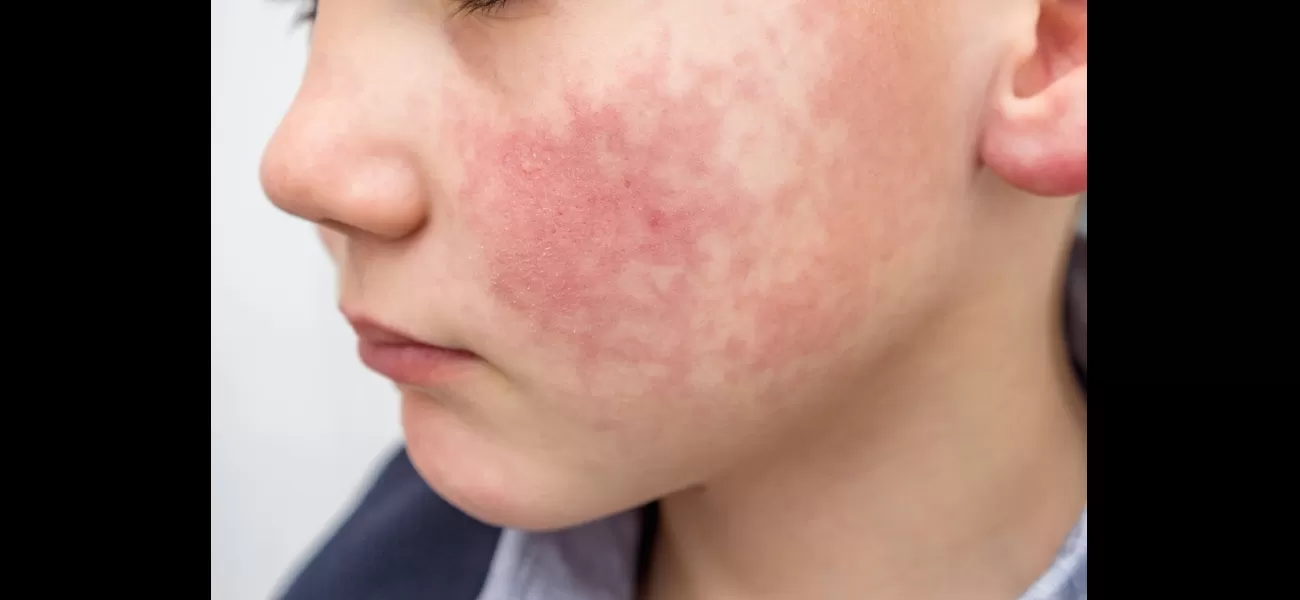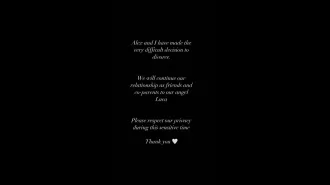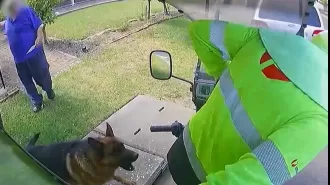What is the virus that causes a red rash on the cheeks and how can it be treated?
A virus called human parvovirus B19 is spreading in the US, following a rise in cases in Europe.
August 20th 2024.

Parvovirus B19, also known as fifth disease or erythema infectiosum, is a seasonal respiratory virus that has been causing concern among health officials. Particularly affecting children, it can cause a facial rash that has been dubbed the "slapped cheek" disease. This virus, which has been seeing a high number of cases in Europe, has now made its way to the US, resulting in the Centers for Disease Control and Prevention (CDC) issuing a health advisory last week.
While there is no routine surveillance for parvovirus B19 in the US, the CDC has recently received reports indicating increased activity surrounding it. These reports include data from commercial laboratories, which have shown a rise in parvovirus B19 test positivity in the general population. Additionally, there has been an increase in serological evidence of infection in plasma donors.
So, what exactly is the "slapped cheek" disease? According to the CDC, it is a highly contagious virus that is transmitted through respiratory droplets. This means that both symptomatic and asymptomatic individuals can spread the virus through respiratory secretions. In fact, studies have shown that 50% of susceptible individuals can get infected from exposure at home, while 20% to 50% of susceptible students and staff can become infected at schools. The virus can also be transmitted from a mother to her fetus during pregnancy, as well as through blood transfusions and plasma derivatives.
The symptoms of parvovirus B19 can vary, depending on the individual. Children who are immunocompetent and adults who show symptoms typically experience a fever, malaise, and myalgia (muscle pain) about seven days after being infected. This phase usually lasts for about five days and is when the person is most contagious. About seven to 10 days later, the second phase kicks in, which is characterized by a facial rash, particularly in children. This is how the virus got its nickname, "slapped cheek." In some cases, a reticulated body rash or joint pain may follow one to four days later. The CDC notes that the facial rash usually appears after the viral loads have declined.
It is important to note that many individuals infected with parvovirus B19 may not show any symptoms at all. For those who do experience symptoms, there is no specific treatment or vaccine for the virus. However, the CDC recommends seeking medical care for pregnant women who have been exposed to the virus or are showing symptoms, as well as individuals with weakened immune systems or chronic hemolytic blood disorders. Wearing a mask can also help prevent the spread of the virus.
Despite its name, the CDC assures us that "children and adults with parvovirus B19 are no longer contagious once the characteristic facial rash appears." So, while the "slapped face" mark may be a telltale sign of the virus, it also means that the person is no longer contagious. By staying informed and following recommended precautions, we can help prevent the spread of parvovirus B19 and protect ourselves and our communities.
While there is no routine surveillance for parvovirus B19 in the US, the CDC has recently received reports indicating increased activity surrounding it. These reports include data from commercial laboratories, which have shown a rise in parvovirus B19 test positivity in the general population. Additionally, there has been an increase in serological evidence of infection in plasma donors.
So, what exactly is the "slapped cheek" disease? According to the CDC, it is a highly contagious virus that is transmitted through respiratory droplets. This means that both symptomatic and asymptomatic individuals can spread the virus through respiratory secretions. In fact, studies have shown that 50% of susceptible individuals can get infected from exposure at home, while 20% to 50% of susceptible students and staff can become infected at schools. The virus can also be transmitted from a mother to her fetus during pregnancy, as well as through blood transfusions and plasma derivatives.
The symptoms of parvovirus B19 can vary, depending on the individual. Children who are immunocompetent and adults who show symptoms typically experience a fever, malaise, and myalgia (muscle pain) about seven days after being infected. This phase usually lasts for about five days and is when the person is most contagious. About seven to 10 days later, the second phase kicks in, which is characterized by a facial rash, particularly in children. This is how the virus got its nickname, "slapped cheek." In some cases, a reticulated body rash or joint pain may follow one to four days later. The CDC notes that the facial rash usually appears after the viral loads have declined.
It is important to note that many individuals infected with parvovirus B19 may not show any symptoms at all. For those who do experience symptoms, there is no specific treatment or vaccine for the virus. However, the CDC recommends seeking medical care for pregnant women who have been exposed to the virus or are showing symptoms, as well as individuals with weakened immune systems or chronic hemolytic blood disorders. Wearing a mask can also help prevent the spread of the virus.
Despite its name, the CDC assures us that "children and adults with parvovirus B19 are no longer contagious once the characteristic facial rash appears." So, while the "slapped face" mark may be a telltale sign of the virus, it also means that the person is no longer contagious. By staying informed and following recommended precautions, we can help prevent the spread of parvovirus B19 and protect ourselves and our communities.
[This article has been trending online recently and has been generated with AI. Your feed is customized.]
[Generative AI is experimental.]
0
0
Submit Comment





